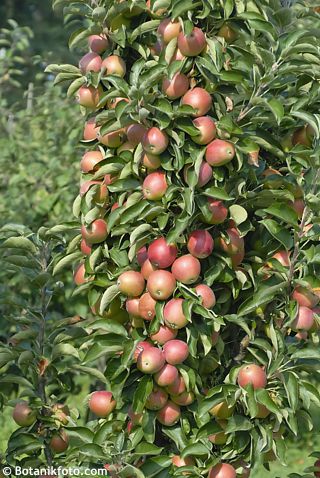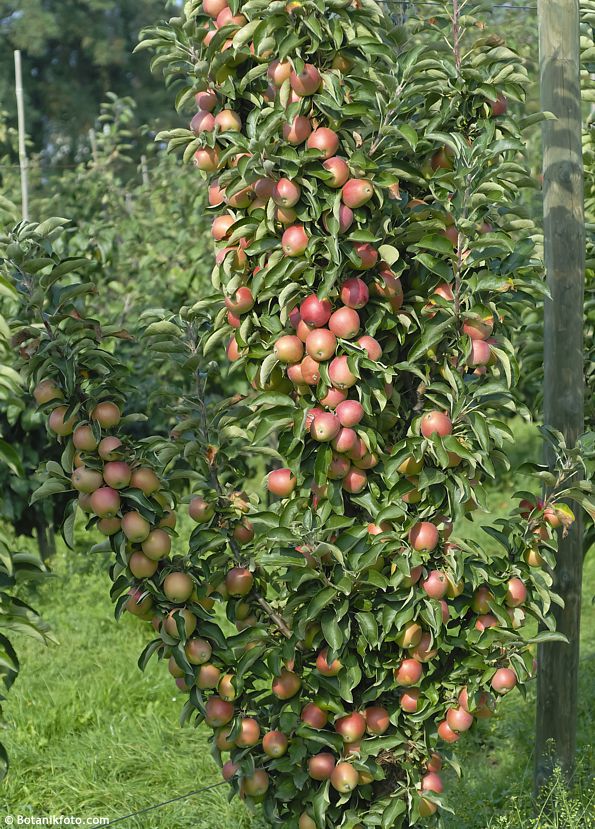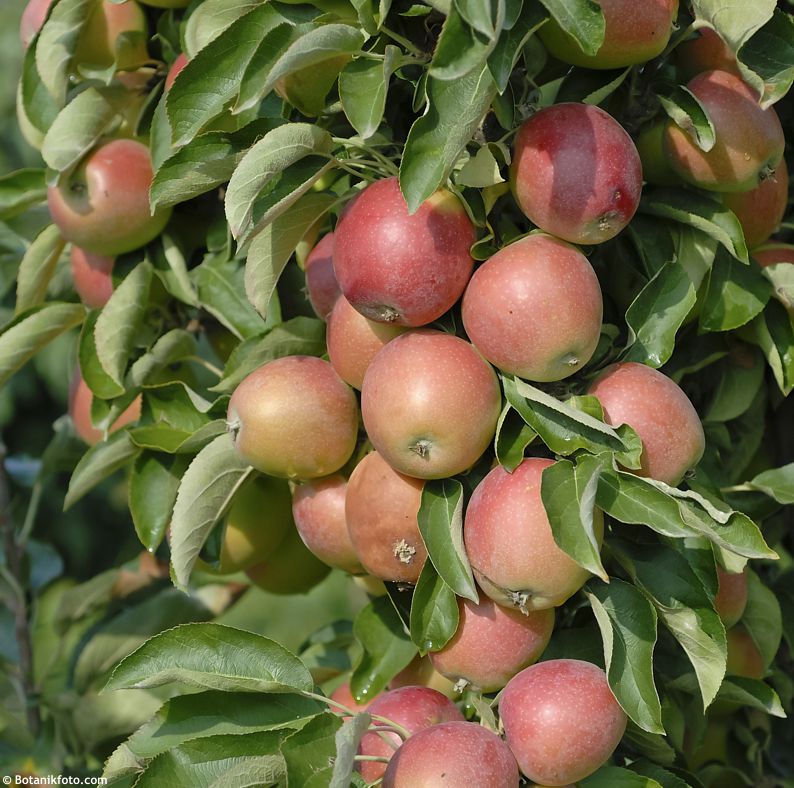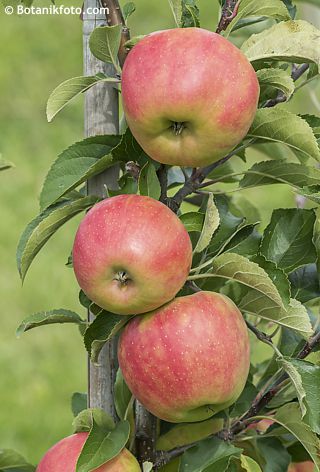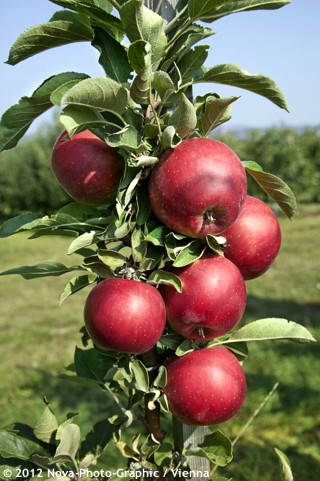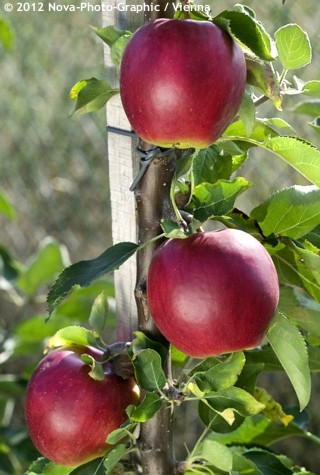Malus domestica 'POLKA' columnar apple - medium late
Malus
Polka is a columnar apple tree from the Ballerina® series. All its varieties come from the same parent - the Wijcik McIntosh variety. It originated as a sport of the McIntosh variety and exhibited strictly upright and columnar growth. Although the taste of the original sport is somewhat lacklustre, subsequent hybrids are crossed with renowned commercial varieties of great flavour and other qualities. Since all columnar apple trees are naturally dwarf or compact in habit, they are commonly grafted onto more vigorous rootstocks such as MM106 or MM111 for better growth.
Polka columnar apple tree makes medium-sized, rounded to slightly cylindrical fruits with a pale green skin that changes to rosy red as it ripens. The flesh is almost white and its taste is best compared to Spartan – very juicy, crispy but firm, and pleasantly sweet with low acidity. It matures from about late September to October and can be stord until at least end January. It is a great dessert apple. Polka is a cross between Wijcik McIntos and Golden Delicious and was developed at the East Malling Research Station in Kent, England, and introduced in 1976.
Most columnar apple trees are highly resistant to common diseases such as scab and powdery mildew. It is self-sterile and needs another variety of apple tree for pollination (from group A or B).
Apple trees will grow in almost any well-drained soil in full sun, but for best yields provide them with deep, fertile soil with some clay content in lower parts with adequate moisture after planting and fruit formation. They set fruit mainly on horizontal branches. Due to its columnar habit, it forms short, lateral, fruiting shoots, so pruning is usually not needed. It grows moderately and makes a handsome slender tree for a small garden or a large planter. Hardy to min. -30 °C (USDA zone 5).
Last update: 09-02-2023

































